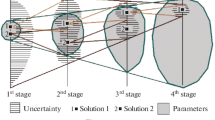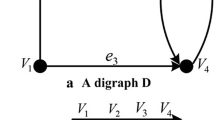Abstract
This article describes a schematic synthesis problem and one of its solution techniques. The problem domain consists of devices that can be described as networks of lumped-parameter, idealized elements in the translational-mechanical, rotational-mechanical, fluidmechanical, and electrical media. Such devices include speedometers, accelerometers, pneumatic cylinders, and pressure gauges. Design problems in this domain are specified by an input quantity, an output quantity, and the desired relationship between the input and output. The solution technique is based on three steps: 1) generate a candidate design, 2) derive and classify the behavior of the candidate, 3) based on the derived behavior and domain knowledge, modify the candidate (if possible) to bring it in line with the specification. The key idea behind this techniques is that an abstract characterization of the essential properties of the candidate design expedites the analysis and modification. The results of this work are aimed at computer tools for preliminary mechanical design.
Similar content being viewed by others
References
Doyle, R.J., “Hypothesizing Device Mechanisms: Opening Up the Black Box,” Massachusetts Institute of Technology Department of Electrical Engineering and Computer Science Ph.D. Thesis, 1988.
Kannapan, S. and K. M. Marshek, “Design Synthetic Reasoning: A Program For Research,” Mechanical Systems and Design Technical Report 202, University of Texas at Austin, Department of Mechanical Engineering.
Ogata, K.,Modern Control Engineering, Prentice-Hall, 1970. p. 284.
Paynter, H.M.,Analysis and Design of Engineering Systems, The MIT Press, Cambridge, MA 1961.
Prabhu, D. and D.L. Taylor, “Some Issues in the Generation of Topology of Systems with Constant Power-Flow Input-Output Requirements,” Proceedings of the 1988 ASME Design Automation Conference, Kissimmee, Florida, September 1988.
Ressler, A.L., “A Circuit Grammar for Operational Amplifier Design,” Massachusetts Institute of Technology Artificial Intelligence Laboratory Technical Report 807, January 1984.
Rieger, C. and M. Grinberg, “The Declarative Representation and Procedural Simulation of Causality in Physical Mechanisms,” Proceedings of the Fifth International Joint Conference on Artificial Intelligence, Vol. 1, p. 250, 1977.
Rosenberg, R.C., and D.C. Karnopp,Introduction to Physical System Dynamics, McGraw-Hill, 1983.
Roylance, G., “A Simple Model of Circuit Design,” Massachusetts Institute of Technology Artificial Intelligence Laboratory Technical Report 703, 1983.
Ulrich, K.T. and W.P. Seering, “Function Sharing in Mechanical Design,” Proceedings of the Seventh National Conference on Artificial Intelligence (AAAI-88), St. Paul, MN, August 1988.
Ulrich, K.T. and W.P. Seering, “Computation and Pre-Parametric Design,” MIT Artificial Intelligence Laboratory Technical Report 1043, October 1988.
Williams, B., “Principled Design Based on Topologies of Interaction,” Massachusetts Institute of Technology Department of Electrical Engineering and Computer Science, Ph.D. Thesis, 1988.
Author information
Authors and Affiliations
Rights and permissions
About this article
Cite this article
Ulrich, K.T., Seering, W.P. Synthesis of schematic descriptions in mechanical design. Research in Engineering Design 1, 3–18 (1989). https://doi.org/10.1007/BF01579999
Issue Date:
DOI: https://doi.org/10.1007/BF01579999




